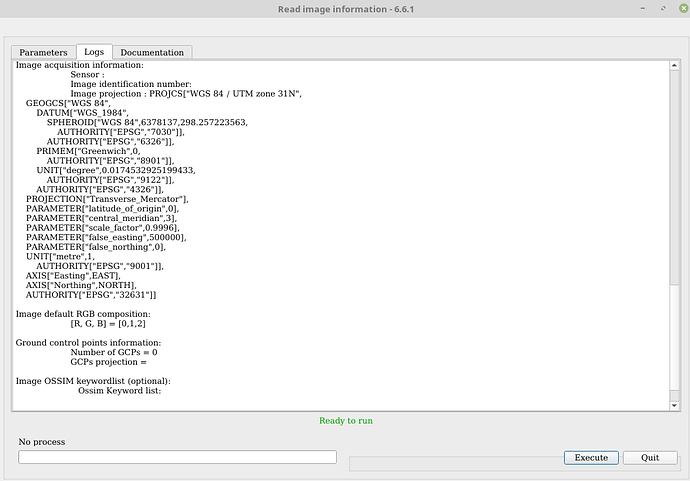Thank you very much for your answer, which sheds a lot of light on.
Unfortunately, I have the impression that FineRegistration does not work. When I open my images on ENVI and link them to compare the reference image with the image after registration, the pixel offset is always present. I don’t understand why. My reference image is an image of 19/08/2018 including bands B2, B3, B4 and B8 (at 10 m resolution) and my second image is an image of 08/09/2018 including the same bands at the same resolution. I put my second image (08/09/2018) in the w parameter so that it can be shifted to the first one (19/08/2018). I tried different values for erx, ery, mrx and mry but my second image doesn’t seem to have been adjusted at all. I also tested with images that included only one band. Do you have any idea what’s wrong and where the problem may come from ?
In addition, as far as Residual Registration is concerned, I saw that you need a file in .geom but I don’t have such a file and I don’t know how to acquire it.
I tried the function otbcli_ReadImageInfo as well as otbgui ReadImageInfo but neither of them gives me a .geom file in output.
I even tried otbgui GenerateRPCSensorModel to get this .geom but I’m not sure it’s the right way to get it because the orthorectification I do at the end of my registration doesn’t work.
Unless it comes from the format of my image? Should only .TIF images be used or are ENVI (.dat or .HDR) images also read by OTB ? Could you help me on how to carry out this Residual Registration ?
Thank you in advance for the extra help you can give me.
Camille
Here is what I get by running the ReadImageInfo :
(I created a new account to answer because the first one was blocked until an administrator activated it, although I might have the same problem with this one  )
)
